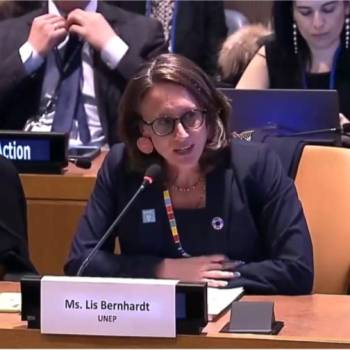
As this year’s fire season has come to an end in Europe, the latest statistics on forest fires reveal the scale of the devastating wildfires that hit the European continent this summer. Long-term solutions are needed to increase the resilience of European forests. A transparent Forest Monitoring Framework and an ambitious Nature Restoration Law are key legislative supports in facilitating such resilience.
Investments in the Union’s response capacities can help mitigate the direct impacts of wildfires; however, they do not address the root causes of such disasters. Climate change is expected to further exacerbate the frequency, length and intensity of these wildfires. According to the EU’s Copernicus Climate Change Service, this year’s summer was the warmest on record. As a result, soil contains much less moisture than normal, making large swaths of land more prone to wildfires. As such conditions are becoming more common, preventative measures, and policies to facilitate such measures, will be essential to forests’ climate resilience capacity.
This year’s wildfires have burnt a staggering 468 289 hectares across the EU, emitting at least 20 million tonnes of CO2 into the atmosphere. The quantity of emissions released from wildfires is more CO2 than the national economies of at least six Member States. While fires have occurred in most EU countries, this year’s wildfires were particularly destructive in the Mediterranean. Spain was hit by wildfires early this season, followed by Italy, Portugal and Greece in July. The latter experienced the largest wildfire ever on European soil. These fires have profoundly impacted local economies, including tourist areas such as Sicily, Tenerife and Rhodes.
This year’s fire season was met with the largest EU wildfire response to date, mobilising an unprecedented number of airplanes and firefighters. In addition to the 16 airplanes and 1 helicopter provided by rescEU, 407 first responders and 62 vehicles were mobilised under the EU Civil Protection Mechanism to assist Greece in combating the wildfires.
The growing length and frequency of the wildfires have put to the test the EU’s firefighting capacities. This has already led to calls from Member States to ramp up the EU’s arsenal for suppressing wildfires. After last year’s wildfires, which cost the EU approximately €2.5 billion in damages, the EU decided to double its firefighting fleet to 28 aircraft across 10 Member States.
The rising costs of wildfires highlight the need to rethink the EU’s approach to forest fires. Approximately 90% of the EU budget is allocated to combating wildfires, whereas only 10% aims to prevent forest fires. An overhaul of EU policy should therefore place a greater emphasis on increasing the resilience of forest ecosystems.
Climate change is not the only cause of wildfires. There are many factors that influence fire risks. Temperature, vegetation types, land use and forest management are all important considerations. If a forest has not been managed sustainably, and has experienced an extended period of drought, very little can be needed to spark a flame. This is illustrated by the fact that more than 9 out of 10 fires in the EU are a result of human activities, such as arson, littered glass or disposable barbeques.
EU policies therefore need to promote the implementation of sustainable land management practices to strengthen the resilience of forest ecosystems. Such practices can take a variety of forms such as reducing vegetation, spacing trees properly, tree thinning, and monitoring for pests as well as controlled or ‘prescribed’ burning to achieve ecological balance. This can help to mitigate the spread and intensity of fires.
By improving the condition of forests and grasslands, both in and outside of the EU’s network of protected Natura 2000 sites, nature restoration measures can be important for the prevention of wildfires. For instance, vegetation replanting can help reverse soil erosion while improving the water retention capacity of soils. Nature-based solutions can therefore synergise multiple objectives, including increasing biological diversity, scaling-up carbon removals and prevention of wildfires.
Timely implementation of the proposed Nature Restoration Law is urgently needed to scale up nature-based solutions to help forests adapt to a changing climate. Putting in place restoration measures can prevent the further degradation of grasslands and forests in the EU while revitalising ecosystem services that protect habitats against wildfires and other natural disturbances.
Moreover, transparent and accurate forest monitoring are a prerequisite for sustainable forest management. Detailed and timely data provide valuable insight into the condition of forests, as well as their biodiversity, wood production and other ecosystem services that they provide. Monitoring data can help forest owners and land managers to adjust management practices to forest disturbances (e.g. wildfires or pests) and can formulate projections on the climate change impacts on forests.
This demonstrates that a monitoring framework would be greatly beneficial to forest owners in shaping their response to natural disturbances. It is therefore of great importance that the European Commission comes forward with a proposal on a Forest Monitoring Framework to ensure that EU-wide data is available on the condition and management of forests. In a series of briefs, we underline the many benefits that a monitoring framework can provide regarding the delivery of the EU’s climate objectives.
Ramping up firefighting capacities will bolster the EU’s response to wildfires, but it does little to address the underlying causes behind these climate emergencies. The EU needs to urgently step up its efforts to strengthen the resilience of forests. An ambitious Nature Restoration Law and a transparent Forest Monitoring Framework are key policy levers to help forests adapt to climate change.
Written by :
- Julia Bognar, Robin Van Dijk
Sources :
- IEEP - Institute for European Environmental Policy
Posted on 2023-10-17 16:27








Comments